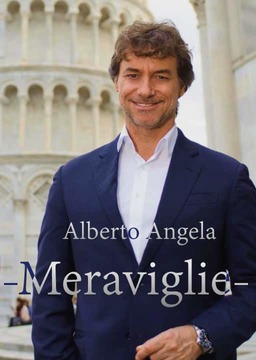









Difficulty:
 Intermediate
Intermediate
Italy
The city of Vicenza and its surroundings enjoyed an architectural golden age in the middle of the 16th century with, as its shining star, architect Andrea Palladio. Alberto Angela tells us the story of how it all came about.
Difficulty:
 Intermediate
Intermediate
Italy
We visit the interior of Villa Coldogno and see to what extent Andrea Palladio was ahead of his time as an architect, and how he was able to combine functionality and elegance.
Difficulty:
 Intermediate
Intermediate
Italy
This episode of Wonders concludes, as we await more treasures to discover.
Difficulty:
 Intermediate
Intermediate
Italy
This episode takes us to Sardinia where we see the ancient, majestic stone buildings, unique to Sardinia, called nuraghi.
Difficulty:
 Intermediate
Intermediate
Italy
The Etruscans were an important part of Italy's ancient history, and its lands extended for a large expanse of the peninsula. We visit Banditaccia a Cerveteri, a necropolis north of Rome.
Difficulty:
 Intermediate
Intermediate
Italy
There were different kinds of tombs built by the Etruscans. Alberto Angela explains how and why they were made the way they were. He also takes us into one of the most famous and beautiful Etruscan tombs.
Difficulty:
 Intermediate
Intermediate
Italy
One of the most famous tombs is that of the Matuna family. The reproductions and depictions of objects found there, ranging from everyday tools to ceremonial and funereal ones, allows us a glimpse of what life would have been like in this ancient civilization.
Difficulty:
 Intermediate
Intermediate
Italy
The Matuna family tomb contains many plaster reproductions of everyday objects, adding to the story of how the Etruscans lived. We move on to Tarquinia, where the tombs were carved out of a sedimentary limestone called Macco, allowing the colorful wall paintings to be preserved.
Difficulty:
 Intermediate
Intermediate
Italy
This magnificent, colorful tomb, dating to twenty-five hundred years ago, depicts a banquet in honor of the deceased, who is clearly a young man. It's a virtual time capsule.
Difficulty:
 Intermediate
Intermediate
Italy
We're still in Tarquinia and we visit the tomb of Aninas. We gain some insight into the alphabet the Etruscans used, allowing us to recognize some names, but unfortunately, they didn't leave much in the way of writings to allow us to know much more.
Difficulty:
 Intermediate
Intermediate
Italy
We get a look at the tomb, in terracotta, of a noblewoman. The clay allows for detail, where tombs in Macco do not. We then go to Rome, to the most important Etruscan museum, where we see once again, what an important role the afterlife played in the lives (and deaths) of the Etruscans.
Difficulty:
 Intermediate
Intermediate
Italy
The Etruscans were influenced by other ethnic groups, particularly the Greeks. On display in the National Etruscan Museum of Villa Giulia, we find evidence of this in the terracotta objects and fine gold jewelry and precious objects dating from the period.
Difficulty:
 Intermediate
Intermediate
Italy
With a look at one of the greatest Etruscan masterpieces in the Villa Giulia museum, we take our leave of Rome to journey to the Umbrian city of Assisi, or, as it was called in Roman times, Assisium.
Difficulty:
 Intermediate
Intermediate
Italy
We're in Assisi, where, during some excavations, a domus was discovered. It's clear it belonged to a wealthy family because of the richness of the wall and floor decorations, and might even have been the home of the poet Propertius.
Difficulty:
 Intermediate
Intermediate
Italy
Parking is a problem in medieval hilltop towns and cities (especially those attractive to tourists), so one solution is to build an elevator to get from parking further down the hill, up to the center of town. But, you never know what you are going to find when excavating. In Assisi, they certainly hit the jackpot, right in the center of town: A roman domus.
Are you sure you want to delete this comment? You will not be able to recover it.